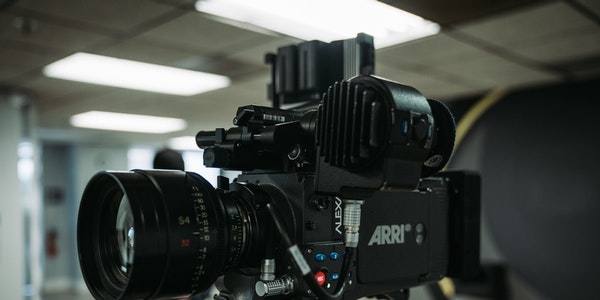How to light up is one of the most frequently received questions in the film industry. In the world of high-definition video and movies, those who win light win the world. Not limited to existing light sources, designing light can be described as the housekeeping skill of cinematographers. There are many articles that introduce the basics of film and television lighting. Here we take the film “The Greatest Game Ever Played” as an example to analyze how to use the main light.
The importance of the main light
The main light is the most important light in photography. It can illuminate the faces of actors and bring out their emotions. The director likes to study the various expressions on the faces of actors, so that they can quickly see which side of their face is more suitable for lighting. When arranging scenes, this information will always linger in the minds of directors. You can also make suggestions during the layout to see how to play the main light from the right side. Because location or layout is not allowed, sometimes we will not be able to do this, but this is at least a starting point.
Once you and the actors begin to arrange the scene, you should think about what is the best way to light the scene, and where the main light should come from. Before this, you should have surveyed the venue, talked to the director, and even imagined it with the relevant personnel during the rehearsal, and you may have a good idea. Is this right or wrong? It is correct because you have gone through everything. It is also wrong, because you shouldn’t be limited by this kind of thinking. What should you do if the actors choose different directions in the scene? You have to keep yourself flexible and able to react to the curveball. These accidents are usually very valuable, and it is worth rethinking which side of their face the light will fall on.
When deciding the whereabouts of the main light, the director generally looks at the actors in the choreography, trying to see how they can best receive the main light when they move in a certain space. The most useful advice from directors is to light an area, but if you light an area multiple times, the appearance will be relatively flat. The director generally never shoots the “flat” appearance, so you have to figure out a way to maintain a beautiful contrast by using reflective cloth, styling the lights, or using small props in the space, such as windows and doors. Set the main light for the actors.
Marking actors is a good idea. The director arranges them on the golf course and then tries to spread them out so that they can move naturally and organically in the space without worrying too much about marking. Moving the camera is the director’s job, not the actor’s job. This is one of the director’s most important goals.
Earlier, because the camera was bulky and inconvenient to move, the location of the marker was crucial. The actor’s job included not only performing well, but also stepping on the marker. Now everything is very different. Some cameras now weigh only 2.5 pounds, and the focuser is as flexible as a Zen master.
You should always install slides for the camera so that you can adjust it instead of ruining a performance. You can’t always be in the right place at the right time. If the situation permits, handheld or using a Steadicam stabilizer can give you this flexibility. You can make the light of this scene beautiful, but if you don’t film the performance of the actors, what’s the point of all this?
The use of the main light in the movie “The Greatest Game Ever Played”
Let us take the last scene of the film as an example analysis. The director wanted the leading actor to be full of gold, so that the new champion was bathed in the beautiful sunshine in the afternoon. This is his moment. The director team actually had actor Shia LaBeouf sitting and standing up and choreographing several times, discussing how to bring Steven Dylan (Harry Vardon) in at the best time. Director Bill Paxton hopes that this scene will have a western feel: the old gunman surrendered and left the bar, the bar door creaked and shook behind him, and only the new champion was alone.
Once it is decided that Zean will sit down and film the film, how does the director give his face? He was sitting very close to the lockers, which surrounded him in a big U shape. The director carefully looked at all the lockers. Where should the main light come from? If I want the main light to come in from behind the camera, the light effect will be very flat. The director wants the actors to be bathed in golden light, so this is the starting point.
The director illuminates 3/4 of the warm-color backlight through the window, and dims the brightness to 50% of the Mole Richardson 20K Fresnel fullspot light, and then leaves everything to nature. If there is a bright light coming in through the window and spilling on his head and shoulders, this light will be reflected by the locker and the floor, so that’s his main light. But is this light enough? Not enough, because the brown locker reflects very warm light, so the director hid a reflective card at the bottom of the locker. Sunlight will hit the reflective card and illuminate his face.
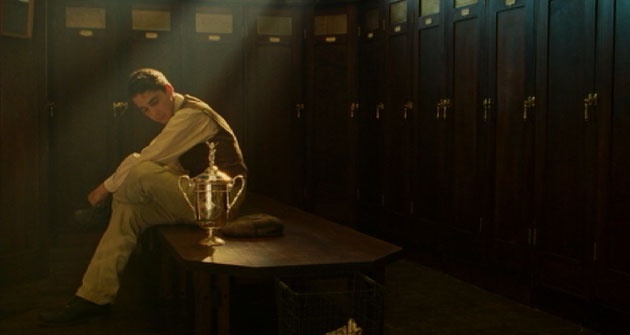
When Zean stood up and put on his coat, the warm light exploded on his left arm, illuminating his face. It was a happy accident, and it looked great. However, when he put on his jacket, the light was not enough. The director wanted to show his little smile. This is a very important scene. In order to achieve this goal, the director hung a white towel on the top of the locker, and he can get a little reflected light from the towel. The director hopes to make this moment very private and very secret, because he just won the 1913 Golf U.S. Open Championship! This was the moment that belonged to him, as if he had just turned into a lone gunman and had just killed another cowboy. The director has always kept the contrast quite strong, so that Zean can be distinguished from the background and everything around him becomes dark, which is crucial.
Here, we need something, and that is color contrast. What is color contrast? When there are only one or two tones in a scene, I feel that it lacks depth and breadth. One way to save it is to add a color that is completely different from the existing one or two colors in the scene, and let this color shine at 180 degrees from the opposite direction. Xi’an is wearing brown pants and a shirt stained with tea, and we have brown lockers and golden light coming in through the windows. Therefore, we must use blue undertones in the shadows to give us contrast.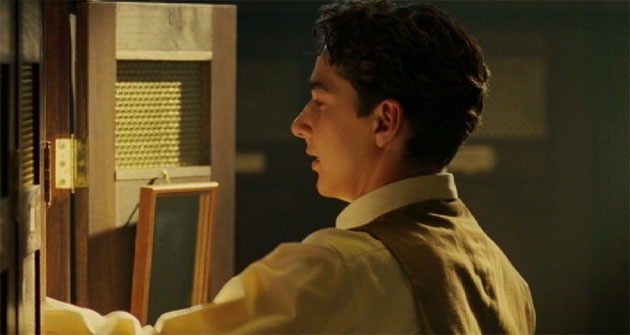
In order to add color contrast, the director hid a 2-4×8 foam board behind the camera, and added two 5500K 1200 LTM HMI PAR lights and a half-sided CTB light film for reflection to mimic the window from the other end of the storage room. The light from the north shining in. What is the light in the north? It is a very smooth and soft ambient light from the north, because it reflects the blue sky light, the tone of this light is generally slightly cooler.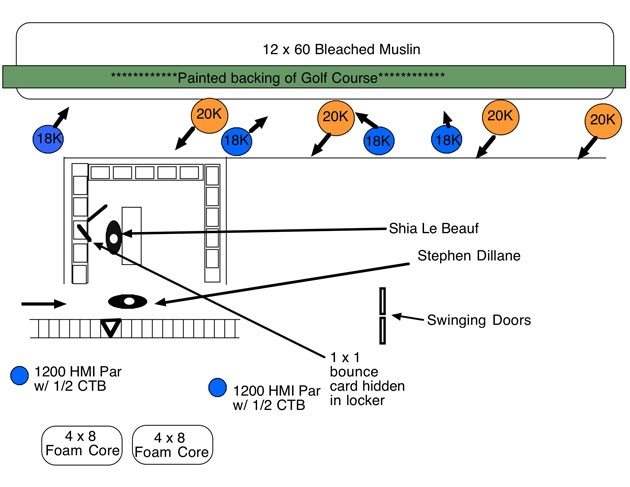
The director’s light-using technique is to first use everything that happens naturally, and then choose how to change or transform according to the whole and feeling.
“The Greatest Game Ever Played” wants to look like a painting, so the director’s tone and color are highly saturated colors in the high-contrast range. The lighting for this film was inspired by a book called “The Glory of Talent: Color America”. This is a photographic album showing 1,100 Kodakrom film negatives found in the attic in the Midwest. The history can be traced back to 1939.
This is the first batch of negatives of the FSA photographic documentary campaign organized by the United States Agricultural Safety Administration, and people have long thought that they have been lost. These negatives have a strong contrast in the dark, with chalky mid-tones and deep saturation of blue, orange and red. Both the director and crew believe that this is the color of the film. The directors have never tried this kind of film expression before, and of course they are extremely excited. They tested the hair, makeup and wardrobe many times to ensure that the colors on the golfer and the actor would have a sharp contrast.
The costume designer initially put Harry Varden in an olive suit. After testing, the director found that the suit would blend into the green grass and wood background. So they chose yellow suits to create contrast, and they received very good results. Let me say something interesting-when the filming of the 500th roll of film is finished, the directors will always open a bottle of champagne for all crew members to celebrate. This time the champagne was opened during the film test.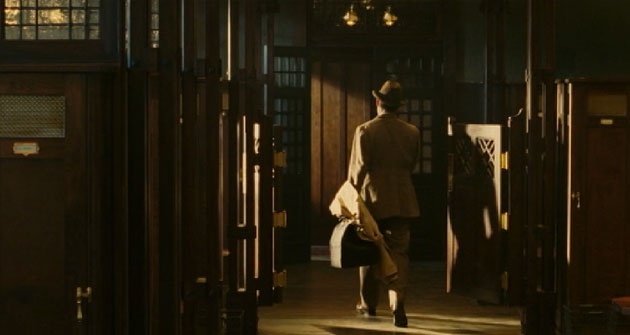
Never stop analyzing light. Store all the images of light firmly in your memory bank. To travel, to collect images, to find photo reference books, they are vital to the creative development!
